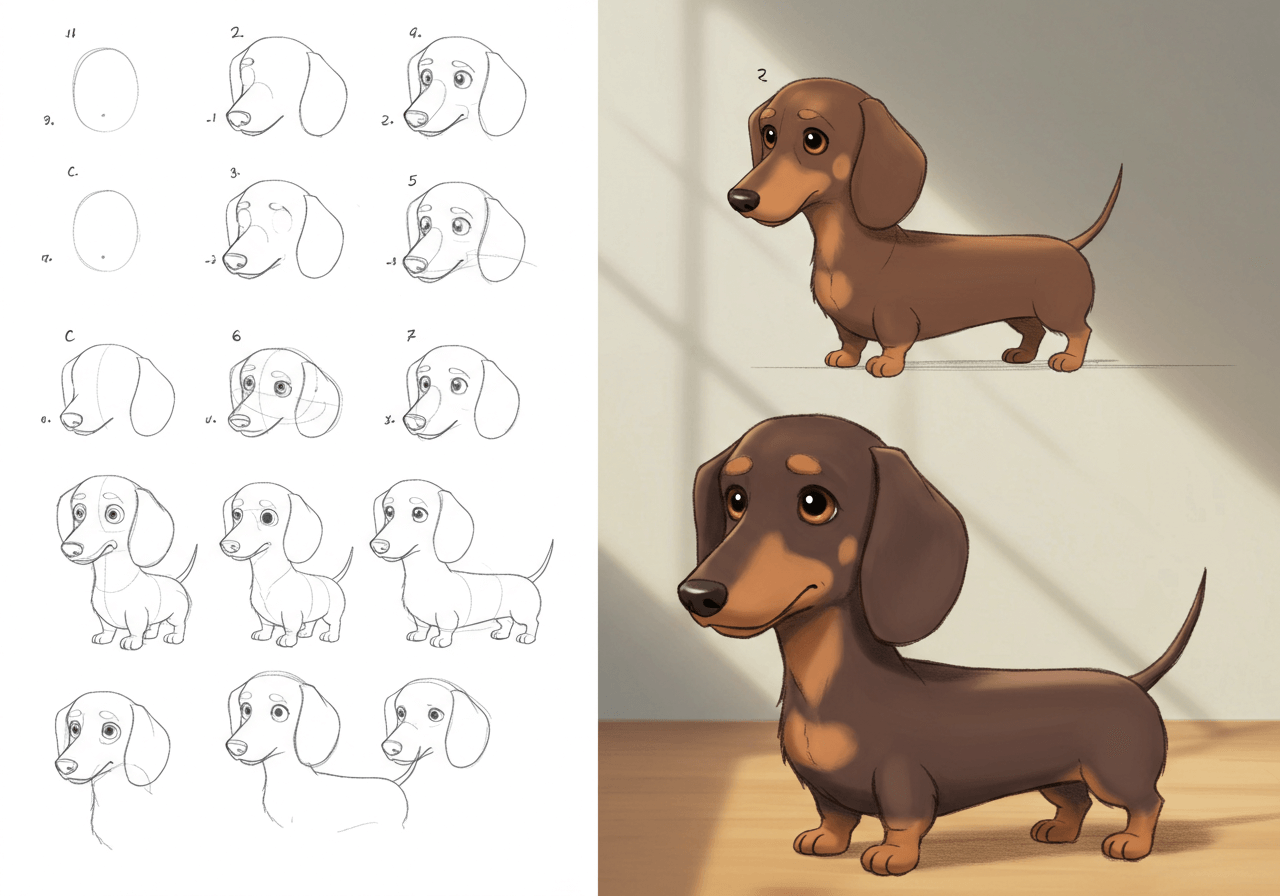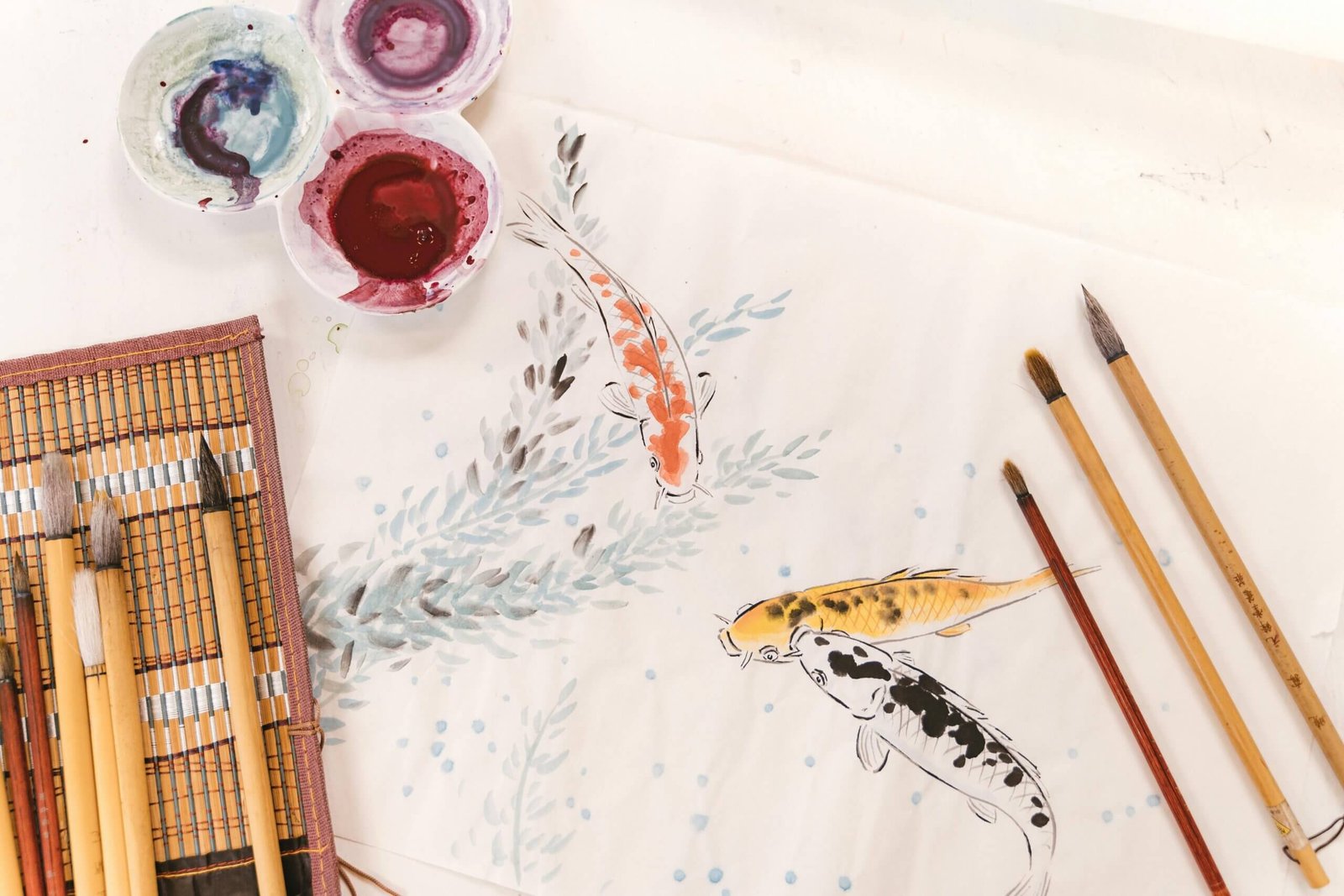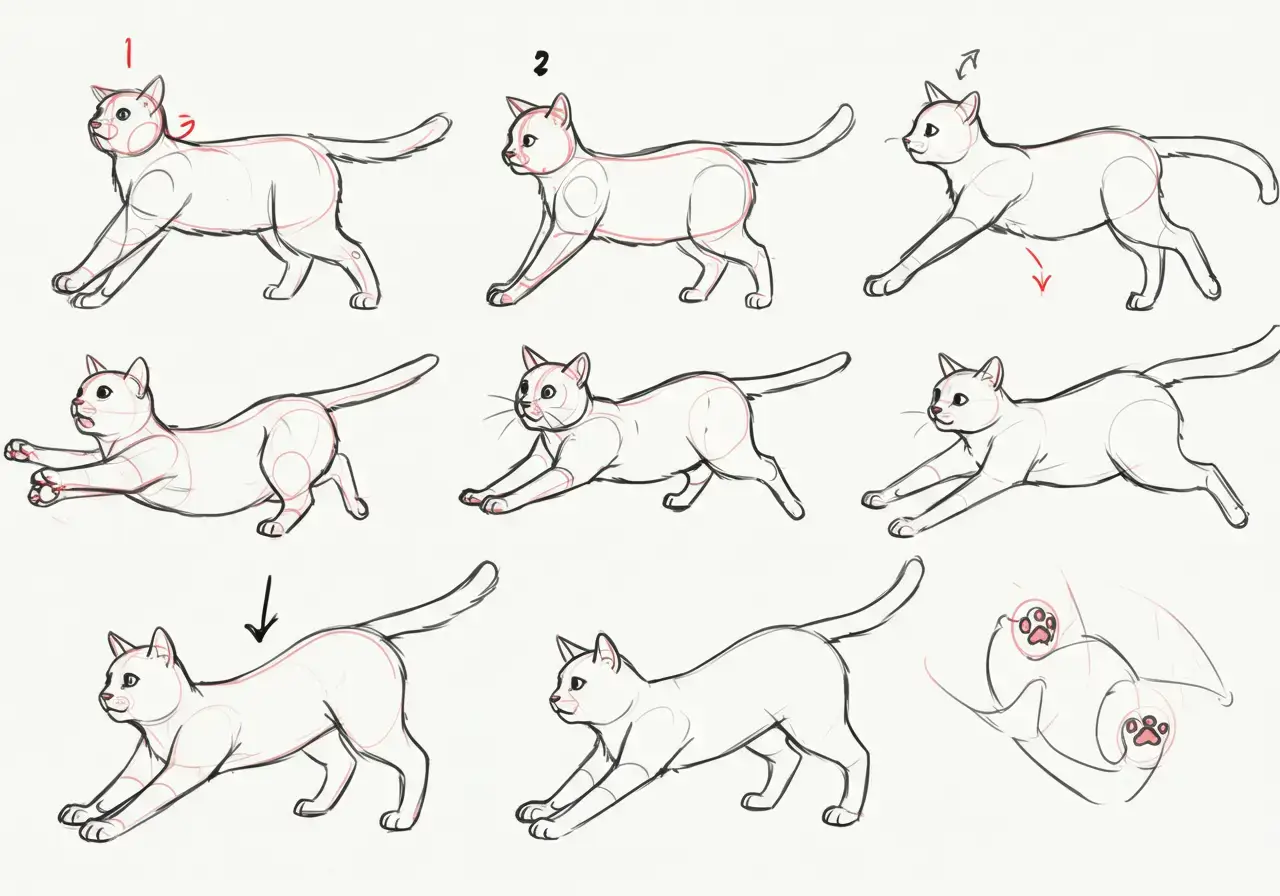Unleash Your Inner Artist: A Fun Guide to Anime Character Drawing for Everyone!
Hey there, future sensei of the anime art world! Ever scrolled through your feed, jaw-dropping at those amazing fan art pieces, and thought, “Man, I wish I could do that?” Well, guess what? You totally can! Today, we’re diving headfirst into the super cool universe of anime character drawing, and trust me, it’s a lot more accessible (and fun!) than you might think. Whether you dream of crafting your own shonen hero or a whimsical magical girl, this guide is packed with secrets to get you started on your artistic adventure. Let’s ditch those perfectionist vibes and just have a blast creating some awesome characters, shall we?
Table of Contents
Chapter 1: The Anime Art Journey Begins – Why Bother, Anyway?
So, why dive into anime character drawing specifically? Beyond the sheer joy of creating something beautiful, there’s a unique magic to it. Anime art isn’t just about pretty pictures; it’s about storytelling, emotion, and bringing characters to life in a way that feels universally understood. Plus, let’s be real, it’s incredibly satisfying to see your favorite characters (or even your own original ones!) come to life under your hand.
What Makes Anime Art, Well, Anime?
You know it when you see it, right? Those big, expressive eyes, dynamic poses, and often exaggerated features are hallmarks of the style. It’s a language of art that speaks volumes without a single word. Learning to draw in this style opens up a whole new world of creative expression and, honestly, it’s just plain cool.
Quick Tip: Don’t stress about being perfect from day one. Even the pros had to start somewhere! Embrace the learning curve.
Chapter 2: Gearing Up – Your Essential Artist’s Tool Kit
You don’t need a fancy art studio or expensive digital tablets to start. Seriously, a pencil and paper are your best friends! But if you’re curious about what other goodies can elevate your anime character drawing game, here’s a quick rundown:
| Tool | Why It’s Awesome |
|---|---|
| Pencils (HB, 2B) | Great for sketching and adding darker lines. HB is your everyday hero, 2B for those lovely dark contours. |
| Eraser (Kneaded) | Super gentle on paper, won’t leave smudges like regular erasers. Perfect for cleaning up those early sketch lines. |
| Sketchbook | Any paper works, but a sketchbook keeps your progress organized and feels more “official.” |
| Fineliners/Inking Pens | For that crisp, clean outline that truly defines an anime character. Different sizes offer different line weights. |
| Coloring Supplies | Copic markers (pricy but amazing), colored pencils (versatile), or even watercolors (for a soft touch). |
| Digital Tablet & Software | If you’re feeling tech-savvy, an iPad/Apple Pencil or Wacom tablet with Clip Studio Paint or Photoshop is a game-changer for digital manga art tutorials. |
Chapter 3: The Blueprint – Mastering Basic Proportions
Alright, let’s get down to business! The secret sauce to a great anime character isn’t just cool hair or fancy clothes – it’s solid foundations. Understanding basic anatomy and proportions is key, even if you’re going for a super stylized look. Think of it like building a house; you need a strong frame before you decorate!
The Human Canvas: A Proportional Guide
Most anime characters, even the super deformed (chibi) ones, start with a human base. Here’s a quick cheat sheet:
- Head as a Unit: We often measure body parts by “heads.” A typical adult character is about 7-8 heads tall, while younger characters might be 5-6 heads.
- Torso (Upper Body): This is usually about 2-3 heads long.
- Legs: These are often the longest part, giving anime characters that slender, elegant look. Think 3-4 heads in length.
Example Proportions:
| Body Part | Typical “Heads” Measurement | Notes |
|---|---|---|
| Adult Male | 7-8 heads | Broader shoulders, often more muscular definition. |
| Adult Female | 6.5-7.5 heads | Usually more slender, defined waist, wider hips. |
| Child/Teen | 4-6 heads | Larger head relative to body, shorter limbs, softer features. |
Let’s “Stick” Together: The Power of Gesture Drawing
Before getting bogged down in details, practice gesture drawing. These are quick, loose sketches focusing on the pose and flow of the body. Think of it as capturing the essence of movement. It’s like drawing a skeleton for your character. For easy anime sketch ideas, try sketching people in different poses from photos or even while just watching TV! It’s a fantastic warm-up and really helps with dynamic poses.
Chapter 4: Face the Music – Expressions and Features
This is where the magic truly happens! Anime faces are all about conveying emotion with maximum impact.
Eyes: The Windows to the Soul (and Story)
Anime eyes are iconic for a reason! They’re usually larger than realistic eyes and packed with detail.
- Shape: From big and round to slender and sharp, the shape alone tells a lot about a character.
- Pupils & Irises: Often large, with reflections (highlights) that give them life and sparkle. Think about where your light source is!
- Eyelids & Lashes: Subtle lines or dramatic sweeps can change everything.
Fun Fact: Different emotional states often involve different eye shapes. Wide, open eyes for surprise; narrowed eyes for anger or determination.
Noses & Mouths: Simple Yet Effective
Compared to the eyes, anime noses and mouths are often simplified:
- Noses: Often just a small dot, a subtle line, or a slight shading.
- Mouths: Can range from a simple line to a full, expressive curve, often exaggerated for comedic effect.
Hair: The Crown of Creativity
Anime hair is legendary for its wild, gravity-defying styles! Don’t draw individual strands; think in terms of large, flowing clumps or “spikes.” Consider:
- Volume: Anime hair usually has a lot of it!
- Flow: How does the hair move? Does it frame the face or shoot up dramatically?
- Highlighting: Add some lighter areas to make it shine.
Chapter 5: Body Language – Poses and Anatomy
Once your basic figure is down, it’s time to bring it to life with awesome poses!
Dynamic Poses: Breaking the Stiff Barrier
Nobody wants a stiff character! Embrace dynamic poses that show action, emotion, or personality.
- Line of Action: Imagine an invisible line running through the spine of your character, showing the main flow of their pose. This is super important for an expressive figure.
- Contrapposto: This fancy word just means putting the character’s weight on one leg, creating a more natural, relaxed look with opposing curves in the shoulders and hips.
- Balance: Make sure your character looks like they won’t fall over!
Hands & Feet: The Artist’s Kryptonite (But We’ll Conquer Them!)
Okay, hands and feet can be tricky, but don’t avoid them!
- Hands: Start with simple shapes (a box for the palm, cylinders for fingers) and gradually refine. Practice drawing them holding objects, making gestures, or just relaxed.
- Feet: Often simplified, but understanding their basic structure (heel, arch, toes) helps immensely, especially for characters wearing shoes.
Pro-Tip: Use your own hands as reference! Seriously, it’s invaluable.
Chapter 6: Clothes Make the Character – Costume Design & Folds
So your character has a body and a face – now let’s dress ’em up! Clothing is a huge part of defining a character’s personality and world.
Designing Attire: Beyond Just Fabric
Think about fabric type, gravity, and movement. Where would creases naturally form?
- Wrinkles & Folds: Clothing isn’t flat! Learn where tension creases (like at elbows or knees) and drape folds (like on loose shirts) occur.
- Accessories: Hats, scarves, belts, jewelry – these are fantastic opportunities for character detail and world-building.
Remember: Clothes hang on a body, so drawing the body first (even if it’s just a light sketch) helps ensure the clothing fits realistically.
Chapter 7: Bringing It All Together – Inking, Coloring, and Finishing Touches
You’ve got your awesome pencil sketch – now what? Time to make it pop!
Inking: The Defining Line
This is where your character graduates from sketch to full-blown artwork.
- Fineliners: Use varying line weights! Thicker lines for outlines (like the whole character or the outside of a leg) and thinner lines for internal details (like fabric folds or hair strands). This adds depth and visual interest.
- Steady Hand: Take your time. You can always erase pencil lines, but ink is a bit more permanent!
Coloring: A Splash of Life
Whether digital or traditional, color breathes life into your anime character drawing.
- Basic Color Theory: Understand warm (red, orange, yellow) and cool (blue, green, purple) colors. How do they interact? Which mood do they create?
- Shading: Don’t just flat color! Add shadows and highlights to give your character form and volume. Think about your light source – where is the light coming from, and where would it hit (and not hit)?
- Digital Coloring: Layers are your best friend! Experiment with blending modes, gradients, and textures.
Consider this: When doing manga art tutorials, coloring often goes hand-in-hand with thinking about the overall mood of the scene.
Chapter 8: Level Up Your Skills – Practice, Feedback, and Inspiration
You’ve learned the basics – now how do you get even better?
The P-Word: Practice Makes (Almost) Perfect!
Seriously, this is the most important tip. Draw, draw, and draw some more!
- Consistency: Try to draw a little bit every day, even if it’s just a quick doodle or some easy anime sketch ideas.
- Life Drawing: Sketch from real life – people in cafes, animals, objects. It helps you understand form and light.
- Copying (for Learning!): Find anime art you love and try to copy it. Don’t trace, but try to reproduce it by eye. This helps you understand how others construct their characters. Remember, this is for learning, not for claiming as your own work!
Seek and Embrace Feedback
It can be scary, but constructive criticism is a superpower for artists.
- Art Communities: Share your work online (DeviantArt, Instagram, Reddit art subs) and ask for feedback.
- Art Friends: If you have artist pals, trade critiques!
Find Your Muse: Staying Inspired
- Watch Anime/Read Manga: Duh! Immerse yourself in the art style you love.
- Expand Your Horizons: Look at other art forms, photography, fashion. Inspiration is everywhere!
- Visit Galleries/Museums: Even traditional art can spark new ideas for composition or color.
Related Article: Want to nail those dynamic fight scenes? Check out our guide on “Drawing Action Poses in Anime”!
Frequently Asked Questions (FAQ) about Anime Character Drawing
Here are some burning questions aspiring anime artists often ask:
Q1: I can only draw stick figures. Is it even possible for me to learn anime character drawing?
Absolutely! Everyone starts somewhere. Stick figures are actually a fantastic foundation for understanding basic poses and proportions. Think of them as your first step towards constructing a full character. Focus on those easy anime sketch ideas and don’t compare yourself to others who have been drawing for years. Consistency and patience are your best tools here, not innate talent!
Q2: How long does it take to get good at manga art tutorials and drawing anime characters?
“Getting good” is a journey, not a destination, especially with art! Some people grasp basics quickly, while others take more time. Generally, with consistent practice (say, 30 minutes to an hour daily), you could see noticeable improvement in your foundational skills within 3-6 months. Mastering the nuances and developing your unique style could take a few years. The key is to enjoy the process and celebrate small victories along the way. Don’t rush it; art is often best savored.
Q3: What’s the biggest mistake beginners make when trying anime character drawing, and how can I avoid it?
One of the biggest blunders beginners often make is wanting to jump straight to drawing complex, detailed characters without understanding the underlying structure. They focus too much on the “pretty” details (like eyes or hair) and ignore the fundamental anatomy and proportions. This leads to characters that look stiff, unbalanced, or “off.” To avoid this, dedicate significant time to studying basic shapes, human anatomy (simplified for anime, of course), gesture drawing, and understanding proportion. Build your character ‘skeleton’ first, then dress it up. This foundational work pays dividends in the long run!
Q4: Should I copy existing anime art, or only try to create original characters from scratch?
Copying existing art can be a super effective learning tool, especially for understanding how established artists construct their characters, handle anatomy, and use line work. Think of it as studying from a master. However, the goal of copying should be analysis and learning, not simply reproducing. Try to understand why the artist made certain choices. Once you’ve analyzed and understood, apply those insights to your own original creations. Don’t just copy forever; use it as a stepping stone to develop your own unique style. Combining learning from others with developing your own ideas is the ideal approach!
Q5: I’m struggling with specific elements like hands or dynamic poses. Any quick tips to overcome these common hurdles?
You’re not alone! Hands and dynamic poses are notorious tricky spots for many artists. For hands, use readily available references – your own hands! Take pictures of your hands in different positions and draw from them. Break them down into simple shapes (a box for the palm, cylinders or ovals for fingers). For dynamic poses, focus on the “line of action” first. Draw a simple, flowing curve representing the spine or core movement of the pose before adding any body parts. Exaggerate the pose slightly at first; it’s easier to tone down exaggeration than to add dynamism to a stiff pose. Studying figures in motion (from sports photos or dance videos) can also provide fantastic easy anime sketch ideas and insights.
Ready to Sketch Your Story?
So there you have it, a whirlwind tour through the exciting world of anime character drawing! Remember, every amazing artist started right where you are now – with a passion and a pencil (or stylus!). Don’t get discouraged by seemingly “bad” drawings; each one is a step on your journey, a lesson learned. So grab your tools, put on your favorite anime soundtrack, and start bringing your unique characters to life. The world is waiting to see what amazing stories you’ll draw! Happy sketching!




